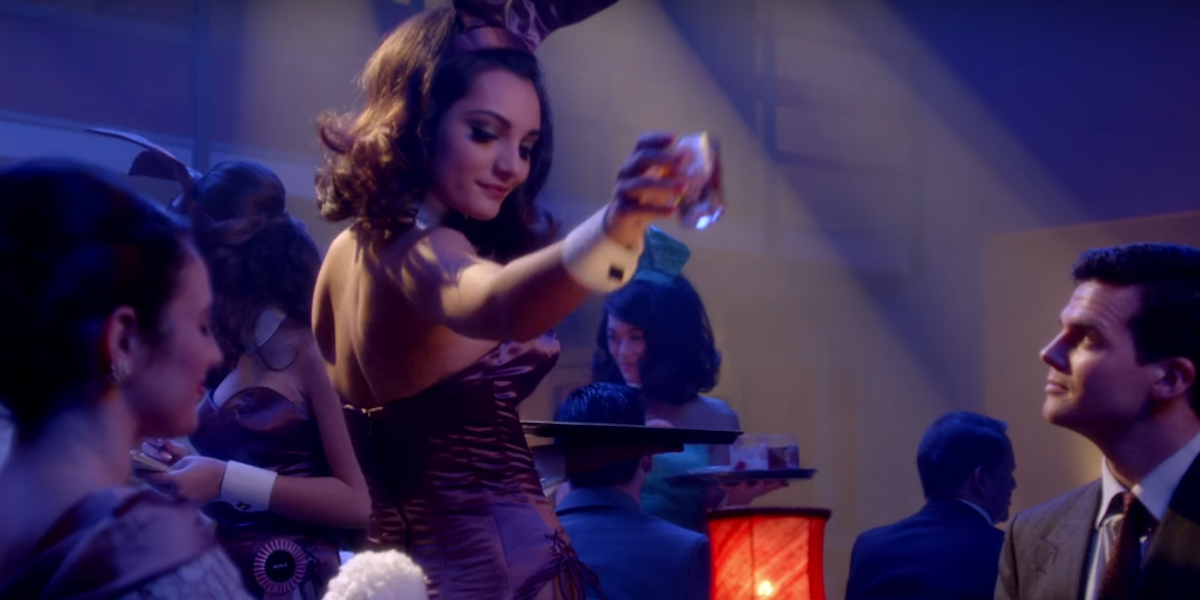In January 1952, a young Hugh Hefner quit his job as a copywriter for Esquire magazine after he was denied a $5 raise. It was a decision that put him on the path that would make him a household name, albeit a controversial one. In December 1953, the first issue of Hefner’s Playboy magazine hit stands, featuring nude shots of Marilyn Monroe, repurposed from a 1949 calendar shoot, back when she was still just Norma Jeane. The issue sold over 50,000 copies—the rest, as they say, is history.
Regardless of your feelings about Hef and his house that Marilyn built, it’s a fascinating history. It’s also the subject of Amazon’s 10-part documentary series, American Playboy: The Hugh Hefner Story, which is now streaming for Prime customers. The series was executive produced by Stephen David Entertainment, which helmed the History Channel’s 2012 series The Men Who Built America and AMC’s docudrama The Making of the Mob.
From those humble beginnings at at kitchen table in Chicago, American Playboy traces the rise and eventual decline of Hefner’s multimedia empire, as well as his involvement in civil rights activism, legal battles against censorship, and tussles with governmental forces such as the FBI and DEA. While the tone is occasionally fawning, it doesn’t shy away from the controversies inherent in the so-called “Playboy lifestyle.” Problem is, American Playboy is too airbrushed to be called a “warts-and-all” portrayal.
https://www.youtube.com/watch?v=JQqU4DfyGZ0
One of the main selling points of American Playboy is the unprecedented access the producers had to over 17,000 hours of archival footage and images from Hefner’s personal scrapbooks. That material alone would provide plenty of grist for the documentarian’s mill, but the series also divides its airtime with extensive dramatized recreations of the events. This helps break up the “people talking over photographs” format that is often seen in documentaries, but it’s also jarring to keep leaping back and forth between actors and interviews with the real-live versions of the characters on-screen. Some of this is because actor Matt Whelan doesn’t particularly look or sound like Hefner, a discrepancy that’s much more noticeable when regularly contrasted with archival footage of Hef himself. It’s certainly not a fatal flaw, but it may take some viewers a little while to settle into the format.
American Playboy is at its best when it veers away from the better-known elements of Playboy’s history—the Marilyn photos, Hef’s various romances—and delves into the historical twists and turns that didn’t hinge on T&A. There were tons of details I personally had no idea about, such as Hefner risking the fate of an early Playboy TV pilot because he refused to back down when the network asked him to nix guests Ella Fitzgerald and Nat King Cole over fears that Southern affiliates would refuse to air the program.
The power struggles between different behind-the-scenes personalities over the direction of the magazine are also compelling, particularly when heads are butting over the magazine’s coverage of controversial issues such as the Vietnam War or AIDS crisis. Make no mistake: There’s plenty of nudity and frequent titillation, but history buffs will find plenty to interest here, even if they’re put off by women in the buff.
If there’s one glaring issue with American Playboy, it’s that the show begins to feel anticlimactic in its final episodes. The first two-thirds of the series involve civil rights struggles, free speech battles, tragic deaths, and a healthy dose of sex. As American Playboy’s narrative enters the ‘90s, the real-life Hefner was decreasing his involvement with the magazine and the Playboy brand was nowhere near as scandalous as it was in more conservative decades. As such, the last couple of episodes simultaneously feel rushed and padded, as if racing to the finish line but trying desperately to distract viewers from how much less compelling the content has become. Since the show is trying to cover the full span of Hefner’s career, these later years are part of that, but American Playboy never quite solves the problem of how to make Hef’s time as an octogenarian reality TV star as interesting as his earlier self.
Still, American Playboy’s strengths definitely outweigh its weaknesses. It’s a study in contrasts and seeming dichotomies—a skin mag crusading for social justice, even as its founder seems genuinely befuddled by justifiable criticism of his exploitation and objectification of women. American Playboy won’t necessarily change anyone’s opinion of Hefner, but it is a memorable look at a brand that loomed large over the second half of the 20th century, and its interactions with the social movements that defined it.
